Enamel paint for walls is making a comeback! Enamel paint can be seen more by its temperament than its fixings essentially. Any colour that air dries to a hard, glass-like shell is known as enamel paint. Fixings might change from one painting to another. However, all lacquer paint is oil-based, dissimilar to divider paint which is typically water-based.
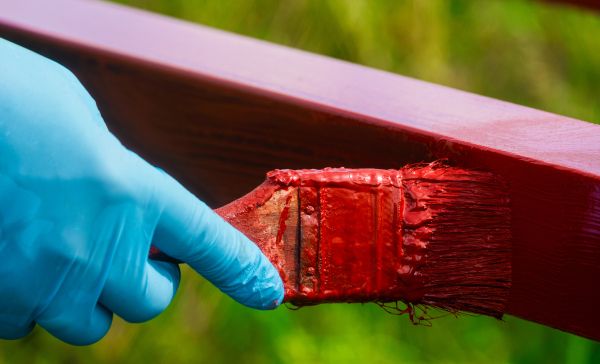
Things we covered for you
The properties of enamel paint for walls are more critical than its substances. Enamel paint refers to any liquid paint that cures to a hard, interstitial (or glass-like) coating in its broadest definition. In contrast to water-based paints, solvent-based paints are sometimes known as oil-based paints.
What is Enamel Paint?
Enamel paint uses its name from the basic terms smelting and melting. Enamel paint meaning includes a glass covering fused or kiln-baked onto metal or ceramics at exceptionally high temperatures. On the other hand, enamel paint shows no resemblance to molten glass enamel since it contains no glass. Even traditional baked enamel treatments, which have been around for a long time on automobiles, have nothing to do with glass.
Uses of Enamel Paint for Walls
While enamel paint for walls is sometimes used to give metallic items a smooth and shiny appearance, it is mostly utilized as a protective spray coating on metal surfaces. It’s a fantastic technique to keep rust and deterioration at bay on outdoor furniture and extensions.
Furthermore, this paint has a consistent finish with fewer brush marks. That means your items will be not only long-lasting but also smooth and lustrous. Enamel paint also has the added benefit of being colourfast and resistant to yellowing and degradation.
Enamel paint can be used on a variety of items, including:
- Grills and railings,
- gates, cabinet, and door handles,
- window fixtures,
- handrails,
- stands, and other outdoor furniture.
Advantages and disadvantages of enamel paints
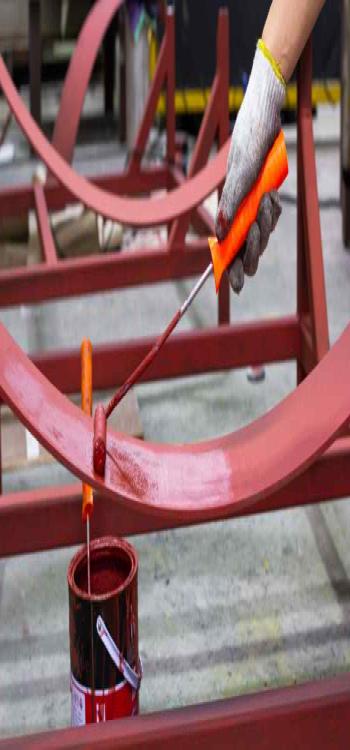
Enamel paints have various advantages. For example, while it is sometimes used to give metallic objects a smooth and shiny surface, it is mostly used as a teflon barrier. It is an excellent method for protecting furniture pieces and extensions against rust and corrosion. Furthermore, this paint provides a homogeneous finish with few brush marks. That means your items will be not just sturdy, but also smooth and lustrous. Enamel paint provides additional benefits such as colour retention and resistance to yellowing or degradation.
Read: Asian Paints Emulsion Price 2024
- Durability: When dried, enamel paint develops a hard, impenetrable shell that is moisture resistant and mildew. Enamel paint has a long lifespan and may be an excellent solution to preserve outdoor furniture and surfaces. The paint is a long-lasting, weatherproof solution for coating surfaces exposed to weather, rain, and cold.
- Cleaning Ease: Surfaces coated with enamel are shiny and simple to clean. To eliminate dust and grime, just wipe these off with a clean cloth. Furniture and walls painted with shiny enamel paint are ideal for areas that collect dirt or become discoloured easily.
- Even Implementation: Enamel paint is fairly simple to use. Enamel paint spreads swiftly and readily once the area to be coated has been properly prepared. It’s even accessible in aerosol cans for easy enamel paint application without a brush.
Enamel paints also have a number of drawbacks, including:
- Drying Time: Enamel paint takes a long time to dry. Depending on the kind, the paints will dry from within or from the outside. Oil-based enamel paint takes 8-24 hours to dry, whereas water-based enamel paint takes longer. Furthermore, it is critical to maintain a stable temperature and relative humidity levels while the paints are curing to achieve a perfect finish.
- Difficult to manage: The odours of enamel paints are frequently strong and pungent. They also contain dangerous compounds, therefore they must be handled carefully and carefully. Thinners, such as white alcohol or mineral spirit, are also required for such paints. While basic thinners like acetone and turpentine can be employed, their efficiency varies substantially. Petroleum enamel paints are notoriously difficult to remove without harming the surface underneath, therefore controlling paint run-off is critical when using them.
Here’s a table comparing the advantages and disadvantages of enamel paint–
| Advantages | Disadvantages |
| Provides a smooth and shiny surface for metallic objects | Takes a long time to dry, with oil-based enamel paint requiring 8-24 hours and water-based enamel paint taking longer |
| Acts as a protective barrier against rust and corrosion | Strong and pungent odours, as well as the presence of dangerous compounds, require careful handling and the use of thinners |
| Offers a homogeneous finish with minimal brush marks | Requires stable temperature and humidity levels during curing for achieving a perfect finish |
| Enhances colour retention and resists yellowing or degradation | Petroleum enamel paints can be challenging to remove without causing damage to the underlying surface |
| Provides durability, moisture resistance, and mildew protection | |
| Easy to clean and maintain shiny surfaces | |
| Even application, available in aerosol cans for convenient use |
Different Types of Enamel Paint for Interior Walls
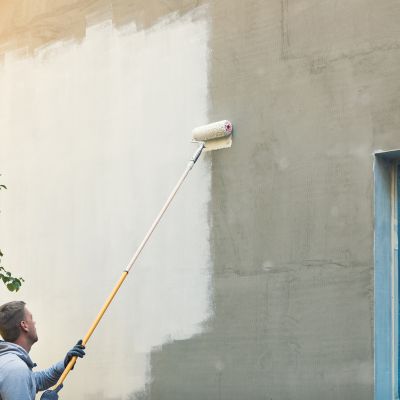
1. Enamel Paint For Interior Walls – Enamel paint is a sort of paint with a murky and gleaming completion. It’s solid and enduring and it’s typically utilized for painting inside or on metal surfaces. Polish paint is oil-based, yet as of late water-based finish opened up too.
Read: Top 20 Sky Blue Colour Combinations
2. Oil-Based Finish Paint – The oil-based finish can take from 8-24 hours to completely dry, and it begins drying from within to the outside. It has a solid scent and can be cleaned with paint removers. When utilizing this sort of paint inside, ensure the region is appropriately ventilated because it emanates toxic exhaust.
3. Water-Based Finish Paint – A water-based finish dries quicker than an oil-based one. It takes under 8 hours to dry out totally. However, it dries first within, and regardless of whether it feels dry to contact, it isn’t easy to characterize whether it’s completely dry. It’s additionally simpler to clean and eliminate because it may very well be washed with water. Enamel paint can be utilized on copper, metal surfaces, glass, wood, plastic, and dividers. The paint is impervious to dampness, and it’s ideal for surfaces that should be washed on various occasions.
Read: Home Painting Services in Malad
4. Enamel Paint For Exterior Walls – Enamel is also not ideal for outdoor application since it is less elastic than acrylic and hardens with time, perhaps leading to cracking. When you want to paint something outside, acrylic paint is the finest choice. Cleaning enamel paint necessitates the use of paint thinner.
5. Enamel Paint for Kitchen Walls – Because it is washable, this is one of the best paints for kitchens. The enamel paint is waterproof, which means it will stay on even if the spatter is washed away. Food, grease. Scuff marks, for example. The painted walls will be washable, much like the bathrooms, making life much easier.
Now let’s explore the different types of enamel paint in detail—
1. What is Pu Enamel Paint?
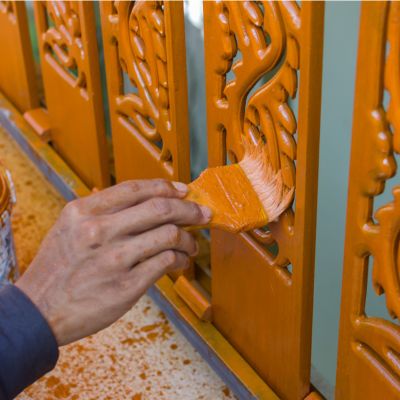
Polyurethane enamels(PU enamels) have two components (also known as 2K) that require resin and hardener to be mixed. This initiates a chemical reaction that chemically links the two components together, resulting in a paint coating that outperforms single-component paints in several ways:
Read: Exterior Painting Service in Bangalore
- Resistance to chemicals
- Defeat to fading
- Hardness to abrasion
Although not all two-component polyurethanes are created equal in terms of composition and function, they represent the gold standard for liquid coatings as a group. In addition, they’re a popular finishing option for various items and substrates due to their attractive appearance and long endurance.
2. Synthetic Enamel Paint: What is its Use?
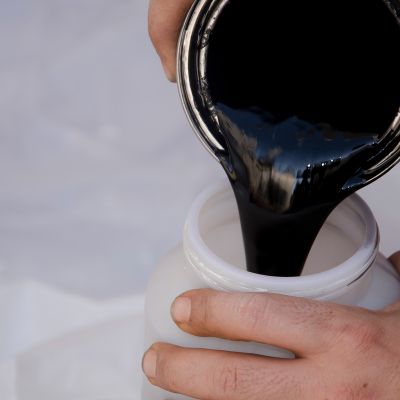
Synthetic Enamel Paints are oil-based paints with excellent adherence. It’s designed for high-gloss, long-lasting films. They also have good coverage and brushing ability. Matte and glossy finishes are the most common finishes for synthetic enamel paints for walls. Its best aspect is that it can check all primers.
Enamel Paint for walls cures to a robust and glossy coating ideal for use outdoors or on hard-wearing surfaces. Exterior and interior applications of synthetic enamel are modified. This is a high-gloss super finish enamel paint for doors, steel, wood, and synthetic board are also available.Synthetic enamel paint for walls has excellent adhesive properties. This sort of paint adheres to all primers with ease. Itcan endure high temperatures and may be washed without losing its luster. It is primarily designed to be long-lasting and resistant.
3. Oil-Based Enamel Paint
Oil-based enamel can take anywhere from 8 to 24 hours to properly dry, and it dries from the inside out. Paint thinners can be used to clean it because it has a strong odour. Because it releases hazardous fumes, ensure the area is well-ventilated while using this type of paint indoors.
Oil-based enamel has a distinct odour and is explosive and flammable, and potentially harmful to human health if exposed for an extended period. In addition, constant exposure causes severe headaches, skin irritation, and even nausea. This is the principal reason why artists keep the doors and windows open to allow for air, which helps to reduce the paint’s pungent odour.
4. Water-Based Enamel Paint
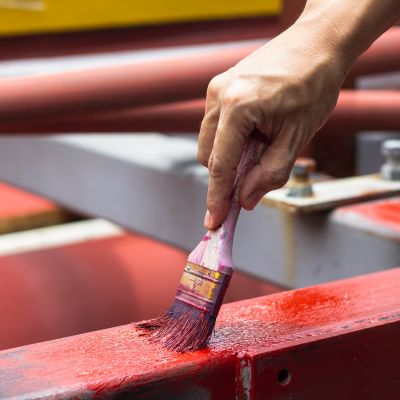
Exterior projects benefit significantly from water-based paints. Mostly so they’re more resistant to UV rays, allowing them to keep their sheen and colour for more extended periods. In addition, water-based paint’s flexibility will enable materials to contract and expand, making it ideal for outdoor applications.
Outdoors, oil-based paints don’t work as well. It produces a chalky surface by breaking down Ultraviolet light. Because the colour has very little elasticity, cracking is more likely.
When painting in inclement weather, water-based paints don’t perform as well as oil-based paints. Lower temperatures and humidity might cause drying periods to take longer. The colour may dry too quickly if the temperature is too high.
Whether it is too fast or too slow, the drying time of water-based paints can significantly impact the paint’s performance and final results. Oil-based paints can withstand a wide range of weather conditions. As a result, severe temperatures and humidity have little effect on application and drying periods.
5. High Gloss Enamel Paint: What is it Used For?
High-gloss Luxol Enamel has a reflective surface finish that can be applied to the exterior and interior surfaces, primarily low carbon steel, wood, and properly prepared masonry. It offers every surface it touches a long-lasting glossy sheen thanks to alkyd and chosen colourants.
Enamel Paint Colour Chart
Enamel paint comes in a wide variety of colours, just like any other kind of paint. However, because enamel paint is known for its high gloss finish, it tends to show off colours in a particularly vibrant way.
Here are some resources to help you find the perfect colour of enamel paint for your project:
- Many paint manufacturers offer online paint colour charts that allow you to virtually “paint” a room in different colours. This can be a helpful way to see how a colour will look in your space before you commit to buying a gallon of paint.
- Big box home improvement stores also often have large paint colour charts on display in their paint departments. These charts can be a good starting point for browsing colours, but they may not include every colour that is available in enamel paint.
- There are also many websites and apps that allow you to create your own colour palettes or browse colour palettes created by others. This can be a great way to find inspiration for your painting project.
How to Apply Enamel Paint?
Enamel paint for walls refers to any colour that dries to a solid, long-lasting finish. They’re an excellent choice for painting items that will be used outside or in areas that will be subjected to a lot of use, such as garden furniture, moulding, and stairs. To work with enamel paint, you must first determine whether it is the best choice for your project and where and how to apply it.
To successfully apply enamel paint to your project, follow these steps:
- Evaluate your project: Determine if enamel paint is the most suitable option for your needs. Consider the surface type, the desired finish, and the durability required. Enamel paints are ideal for outdoor items or areas with heavy use.
- Surface preparation: Prepare the surface by ensuring it is clean, dry, and free of any dust, dirt, or grease. Remove any existing paint or coatings that may interfere with the adhesion of the enamel paint. Use sandpaper or a degreaser if necessary.
- Primer application (if needed): Depending on the surface and the specific enamel paint product, a primer may be required. Apply a suitable primer to improve adhesion, enhance durability, and promote an even finish. Follow the manufacturer’s instructions for the primer application.
- Choose the right tools: Select appropriate tools for applying enamel paint, such as brushes, rollers, or sprayers. Consider the size and intricacy of the surface to determine the most suitable tool for the job. Ensure that the tools are clean and in good condition.
- Paint mixing: If required, thoroughly mix the enamel paint before application. Some enamel paints may require stirring to ensure consistent pigmentation and proper suspension of any settling particles. Follow the instructions on the paint can for the correct mixing process.
- Application technique: Apply the enamel paint using smooth, even strokes or sprays, depending on the chosen method. Work in small sections, starting from the top and moving downward. Maintain a consistent pressure and avoid excessive brushing or rolling to minimize brush marks or texture inconsistencies.
- Multiple coats (if necessary): Depending on the desired finish and the opacity of the enamel paint, multiple coats may be required. Allow each coat to dry completely before applying the next. Follow the recommended drying time provided by the manufacturer.
- Cleanup: Clean your painting tools and equipment immediately after use. For oil-based enamel paint, use mineral spirits or paint thinner for cleaning. Water-based enamel paint can be cleaned with water and soap. Dispose of any leftover paint or empty containers responsibly.
Remember to always follow the specific instructions provided by the manufacturer of the enamel paint product you are using.
What’s The Difference Between Enamel and Acrylic Paint?
Understanding the difference between enamel and acrylic paint is crucial for any aspiring artist or DIY enthusiast. While both types offer unique advantages, their characteristics and applications differ significantly.
But before that let’s delve into the world of paint and start by exploring the fascinating properties of acrylic paint, its versatility, and the wide range of artistic possibilities it offers–
What is Acrylic Paint?
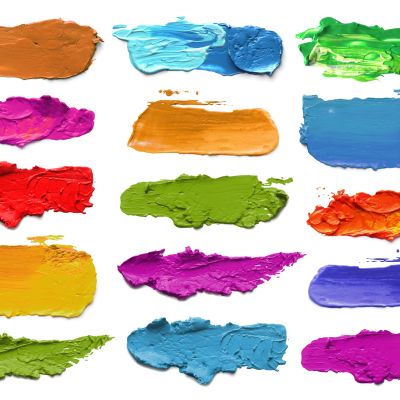
Acrylic painting is a work of art executed in the mechanism of manufactured acrylic pitches. Acrylics dry quickly, fill in as a vehicle for any colour, and are equipped for giving both the straightforward splendour of watercolour and the thickness of oil paint. In addition, they are viewed as less impacted by heat and other damaging powers than oil paint.
They found blessing among specialists who were worried about the well-being hazards presented by the treatment of oil paints and the inward breath of vapour related to them. Due to this large number of positive attributes, acrylic paints turned out to be promptly well-known with specialists when they were first monetarily advanced during the 1960s. Remarkable twentieth-century specialists who utilized acrylic paint incorporate Pop craftsmen Andy Warhol and Roy Lichtenstein, Op craftsman Bridget Riley, shading field specialists Mark Rothko, Ellsworth Kelly, and Barnett Newman, and British craftsman David Hockney.
A fresh coat of paint may radically improve the appearance of your home or any individual room. When it comes to the type of paint, though, you have the option of using acrylic or enamel paint. When it comes to painting the interior or exterior of a home, these are the most typical paint finishes.
Here are some of the distinctions between acrylic vs enamel paint finishes so you can make an informed selection of whether to paint your home’s interior or exterior.
- Enamel paint tends to be yellow with time, whereas acrylic paint stays the same colour.
- Enamel paint has a glossy appearance, but acrylic paint has a matte appearance.
| Feature | Enamel Paints | Acrylic Paints |
| Drying Time | Slow drying time, typically requires 8-24 hours to dry | Fast drying time, typically dries within 15-30 minutes |
| Finish | Glossy, smooth finish | Matte or glossy finish, depending on the formulation |
| Odour | Strong odour due to the presence of solvents | Low-odour, water-based formulation |
| Cleanup | Requires white spirit or paint thinner for cleanup | Water and soap cleanup, no need for harsh chemicals |
| Mixing | Can be thinned and mixed with enamel reducers or thinners | Can be thinned and mixed with water or acrylic mediums |
| Durability | Highly durable and resistant to wear and tear | Durable, but may not withstand heavy wear as well as enamel |
| Flexibility | Less flexible and may crack or chip on flexible surfaces | More flexible and suitable for a variety of surfaces |
| Toxicity | Contains solvents and may release harmful fumes when used | Generally considered non-toxic and safe for indoor use |
| Application | Suitable for brush, roller, or spray application | Suitable for brush, roller, spray, and airbrush application |
| Overcoating | Can be easily overcoated with additional layers of enamel | Can be overcoated with both acrylic and enamel paints |
| Uses | Commonly used for metal surfaces, models, and crafts | Versatile and can be used on various surfaces and art projects |
Choosing the right Enamel paint for walls is a decision that the homeowner must make after thoroughly considering the properties and types of enamel paints.
If you need consultation from professional interior designers and painting experts, you will certainly find assistance on NoBroker. Please leave a comment below this article, our executive will be in touch with you shortly.
Frequently Asked Questions
Ans. Enamel paint is one the most popular types of paint used for painting the exterior of the walls.
Ans. Both enamel and acrylic paints are good for Indian walls. Enamel paints are good for exterior walls while acrylic paints are good for interior walls.
Ans. Acrylic enamel paints are harder than normal paints and are hence used for exterior surfaces such as walls, cars, etc.
Ans. Enamel paints come with water-resistant qualities but they are not fully waterproof.
Ans. The cost of enamel paint can vary depending on several factors, but generally, it falls between 50-60 square feet (4.6-5.6 square metres). However, to get the most accurate estimate for your project, it’s important to consider the specific paint you choose, and the surface you’re painting.














